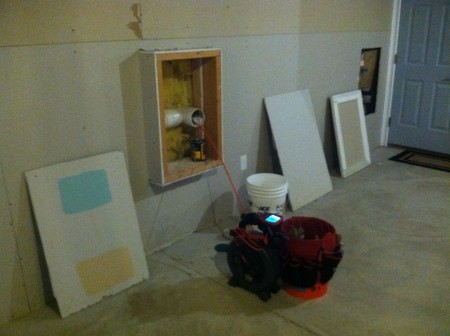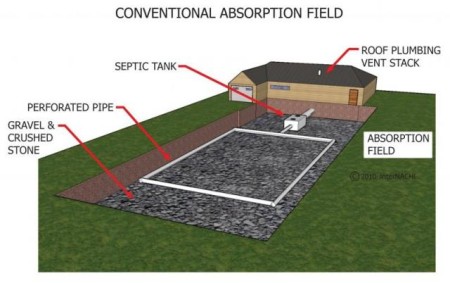SEPTIC INSPECTIONS
Septic Inspection Services
Many residential and commercial buildings have a septic system. As of the writing of this, septic system inspection standards are soon to be in effect, making a proper septic system inspection of your potential commercial property very important. Residential septic systems are equally important as a crucial part of your home and how it works. That is why we take a “whole house approach” to septic system inspections, enabling us to see more than other septic inspectors.
We run the water at every sink, shower, faucet, and sewer ejection point, observing how the water flows, enters the tank, the D-Box, and eventually the leach field to fully understand potential issues and prevent possible septic failures and sewage backups. We also utilize sewer cameras to pinpoint areas of distress and damage that may have otherwise been missed. For instance, many times a break in the pipe or damage may be present, but difficult to find. Instead of spending hours or even days trying to find where the issue is, like many inspectors, our sewer cameras are able to pinpoint the exact location of issues and save time and money.
We have been inspecting septic systems to above both the residential level and the proposed State commercial level for many years. To help our clients understand how we inspect their septic system better, we have laid out our inspection method below. Please feel free to contact us with any questions you may have on our process.


Our Whole House Approach
Is your septic inspector checking the interior of the home plumbing system? Is all of the plumbing in the home discharging into the septic? Anyone who does septic inspections should be doing a complete inspection of the home’s plumbing system to make sure it’s plumbed appropriately. Discharge of grey water onto the ground can be expensive to correct.
My approach to septic inspections is to look at the home as a system, This means I check not only the septic system, and the plumbing, but also the well. I record how much the well produces, i.e., gallons per minute (GPM) and pounds per square inch (PSI), before and after the septic inspection, this gives you an idea on how well your water supply produces water and whether or not it can keep up with demand. I also conduct a hydraulic load test where I introduce a certain amount of water through the home’s plumbing system. This also tests the home’s plumbing drains where I check for leaks, or in some cases inappropriate discharge of grey water onto the ground.
The Proper Inspection Method
Evaluate the plumbing components inside the building
We inspect all of the interior plumbing fixtures for proper connections. I also make sure all the waste lines are properly discharging into an approved waste system. Water treatment systems can be harmful to septic systems and We evaluate where the discharge of these systems goes.
Examine the inside of the treatment tank
We open the initial treatment tank and examine the inlet and outlet baffles and determine the volume of the treatment tank. We inspect the visible parts of the tank for cracks, water infiltration, corrosion, and leakage and take a sample from inside the tank with a sludge sampler to determine the amount of sludge, liquid level, and scum layer. This allows me to understand whether the tank is healthy and if it needs pumping.
Inspect the Distribution Box (D-Box)
The D-Box is an important component in your septic system that keeps things evenly distributed. We inspect the distribution box for corrosion, leakage, and cracks. We also make sure the D-Box is level to ensure equal flow to each pipe in the leaching field.
Check the EDA (Effluent Disposal Area) or leach field
The leach field is not the hardest working component of a septic system, but it is one of the most vital. We determine the location and size of the EDA. Test holes are hand dug in different locations throughout the EDA. This allows me to examine the condition of the EDA as well as how much saturation is present. A full evaluation of the EDA is critical in determining the overall condition of the septic system.